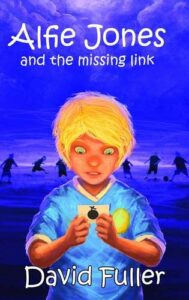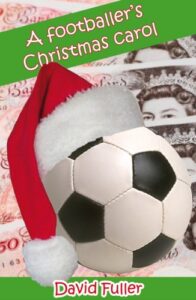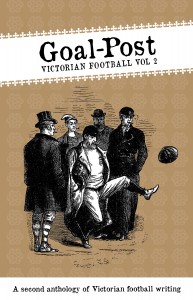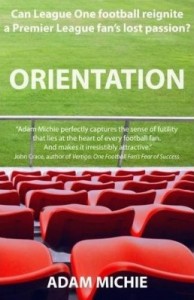Background and concept
 Every four years sixteen European nations compete for the Henri Delaunay (European Championship) trophy. During the summer of 2012, photographer George Nelson set out to visit a number of London venues, (bars, restaurants, clubs and churches), screening Euro 2012 matches. His aim was to ‘follow’ every team with its London residing supporters and capture each experience in pictures.
Every four years sixteen European nations compete for the Henri Delaunay (European Championship) trophy. During the summer of 2012, photographer George Nelson set out to visit a number of London venues, (bars, restaurants, clubs and churches), screening Euro 2012 matches. His aim was to ‘follow’ every team with its London residing supporters and capture each experience in pictures.
There were only two self-imposed restrictions. One was a minimum of one venue to each participating nation and the second was the omission of England supporters, bringing down the number of locations to fifteen. The latter was a conceptual choice, as the gathering of immigrant collectives lay at the hub of this venture. The Euro 2012 project also serves as a demonstration of the London’s uniquely diverse make-up, locates several subtleties in cultural variation, yet more than hints at a universality in our relationship with ‘the beautiful game’.
From this vast palette, George settled on a single location in which to centre his book and the first Tatum Special publication. ‘Come Sunday’ hones in on the Italian Euro 2012 experience. On three Sundays* that summer Italian supporters gathered at C’asa Italiana – a penalty kick away from their Basilica-style Church, St Peter’s – as Clerkenwell reclaimed its ‘Little Italy’ status.
* 10 June 2012, Group C, Italy 1 – 1 Spain
24 June 2012, Quarter-Final, Italy 0 – 0 England (Italy won pens 4-2)
01 July 2012, Final, Italy 0 – 4 Spain
Review
In December 2013 Monte Fresco died at the age of 77. It’s a name that many people won’t recognise, although undoubtedly many will remember his work. Monte was an English sports photographer, and one of his most famous images was that of Vinnie Jones ‘tackling’ a young Paul Gascoigne.
Despite the fact that our screens are awash with football from all over the world, photographs which capture a moment, an emotion or are breath-taking, challenging or beautiful, will always have a place in ‘the people’s game’.
George Nelson in ‘Come Sunday’ has looked to focus on the fans rather than the action on the pitch. Nelson shared three games with the Italian fans, including those which saw, qualification from Group C, the drama of a penalty win over England and the disappointment of defeat in the Euro 2012 Final to Spain.
The book consists of thirty images which capture this journey. Nelson succeeds in conveying the emotion and drama of both victory and defeat, without an image of any of the games. Instead the ‘high and lows’ are conveyed through the expressions and body language of those gathered in Clerkenwell.
Nelson is successful in capturing more than just the football, in that the essence of family and community is evident, as the pictures portray the old and the young, men and women, all united in supporting ‘their team’.
One of the other themes which emerge from this collection is the idea of football as a religion. Not only are the images captured on a Sunday (the traditional day of rest), but the location is linked to the local Catholic church.
The great thing with the images is that you can initially focus on the central figures, but then also can revisit the pictures and understand what is going on in the background, so getting a feel for the context. For instance, the last image in ‘Come Sunday’ shows a mother, coat in hand, ready to take her children home. On the screen in the room, Spanish striker Fernando Torres celebrates victory in the Final as he takes his own child on a lap of honour.
It is a small tome, but is a collection of pictures you’ll want to look at again and interpret for yourself.
* * * * * * * * *
For more information about George Nelson and to buy ‘Come Sunday’, follow this link
 This is the third instalment in the series following on from, Alfie Jones and a change of fortune and Alfie Jones and a test of character.
This is the third instalment in the series following on from, Alfie Jones and a change of fortune and Alfie Jones and a test of character. Every four years sixteen European nations compete for the Henri Delaunay (European Championship) trophy. During the summer of 2012, photographer George Nelson set out to visit a number of London venues, (bars, restaurants, clubs and churches), screening Euro 2012 matches. His aim was to ‘follow’ every team with its London residing supporters and capture each experience in pictures.
Every four years sixteen European nations compete for the Henri Delaunay (European Championship) trophy. During the summer of 2012, photographer George Nelson set out to visit a number of London venues, (bars, restaurants, clubs and churches), screening Euro 2012 matches. His aim was to ‘follow’ every team with its London residing supporters and capture each experience in pictures.
 What a strange main title it seems for a book about football, until you read what it is referring to (page 78)! The subtitled part takes rather longer to develop, naturally, since that is the central theme and Sanders does take a while to get into his stride, mainly because he is detailing the growth of football in the British public schools.
What a strange main title it seems for a book about football, until you read what it is referring to (page 78)! The subtitled part takes rather longer to develop, naturally, since that is the central theme and Sanders does take a while to get into his stride, mainly because he is detailing the growth of football in the British public schools. Synopsis
Synopsis When England manager Roy Hodgson recently suggested that he would be monitoring the progress of Manchester United’s Belgian youngster Adnan Januzaj, the issue of international player eligibility was once more in the news.
When England manager Roy Hodgson recently suggested that he would be monitoring the progress of Manchester United’s Belgian youngster Adnan Januzaj, the issue of international player eligibility was once more in the news. Back in September 2012, Paul Brown published his
Back in September 2012, Paul Brown published his  In the Prologue to Orientation, Adam Michie recalls being taken by his father to Upton Park in February 1989, in a pre-Premier League, pre-Sky Sports, First Division encounter between West Ham United and Queens Park Rangers that ended 0-0. Football in England at that time was about to hit the buffers with hooliganism at its height and the tragedy of Hillsborough months away. The subsequent recommendations of the Taylor Report and the birth of the Premier League changed the sport in this country irrevocably. Michie continued with visits to Upton Park with his grandad, but yearned for the experience of going to games, “…with people I knew, my friends, sharing the experience…” He took up supporting Spurs in 1991 so that he could go to games at White Hart Lane with his schoolboy mates. However, as ticket prices rocketed and his friends took up supporting some of the other ‘big’ clubs in London and further afield, Michie drifted away from attending games and became one of the games “…sofa supporters…”
In the Prologue to Orientation, Adam Michie recalls being taken by his father to Upton Park in February 1989, in a pre-Premier League, pre-Sky Sports, First Division encounter between West Ham United and Queens Park Rangers that ended 0-0. Football in England at that time was about to hit the buffers with hooliganism at its height and the tragedy of Hillsborough months away. The subsequent recommendations of the Taylor Report and the birth of the Premier League changed the sport in this country irrevocably. Michie continued with visits to Upton Park with his grandad, but yearned for the experience of going to games, “…with people I knew, my friends, sharing the experience…” He took up supporting Spurs in 1991 so that he could go to games at White Hart Lane with his schoolboy mates. However, as ticket prices rocketed and his friends took up supporting some of the other ‘big’ clubs in London and further afield, Michie drifted away from attending games and became one of the games “…sofa supporters…” Some reviews are easier to do than others in that you know exactly how you feel about a book and therefore can easily articulate that. The more difficult ones are those where you are still, even a few days after finishing the book, unsure as to the impression left by the pages you have just digested.
Some reviews are easier to do than others in that you know exactly how you feel about a book and therefore can easily articulate that. The more difficult ones are those where you are still, even a few days after finishing the book, unsure as to the impression left by the pages you have just digested. “Keep the Faith” is the personal reflections of Dan Tait in supporting his team over the last twenty years. His story starts back in 1992, when the nine year old York-born Tait ignored the lure of the shiny new Premier League and the ‘big’ clubs, to support his local team York City. It was to prove a fantastic first season following The Minstermen, as the team gained promotion from the ‘old’ Fourth Division via a Play-off win at Wembley against Crewe. Just as the book begins on a positive note, so does it end in this manner, with York retaining their League status on the last day of the 2012/13 season.
“Keep the Faith” is the personal reflections of Dan Tait in supporting his team over the last twenty years. His story starts back in 1992, when the nine year old York-born Tait ignored the lure of the shiny new Premier League and the ‘big’ clubs, to support his local team York City. It was to prove a fantastic first season following The Minstermen, as the team gained promotion from the ‘old’ Fourth Division via a Play-off win at Wembley against Crewe. Just as the book begins on a positive note, so does it end in this manner, with York retaining their League status on the last day of the 2012/13 season.